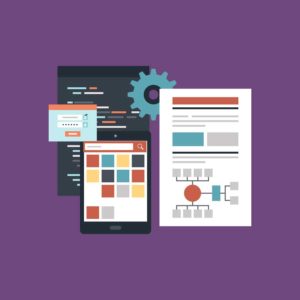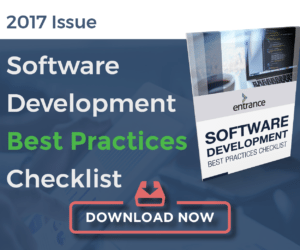Whether you’ve inherited a SharePoint solution or you were the one who envisioned, championed and oversaw its roll out and implementation, a SharePoint Migration initiative is no small undertaking. Those who underestimate its complexity are often left having to explain to a team of disappointed executives why both their budget and timeline have been blown. Unfortunately, you can’t stay in that old portal solution forever without it being phased out of Microsoft support or without your users clamoring for the latest functionality. What you need when faced with such an onerous task is a Microsoft Gold Partner who has tackled this problem successfully for many clients before you.
The battle scars and lessons learned from previous migrations are sure to make your SharePoint Migration initiative more palatable. The SharePoint Migration Services Team at Entrance Consulting is a Microsoft Gold Partner that has developed its own SharePoint Migration Project Plan that can be best summarized as Audit, Test and Execute, ATE. This methodology has been developed by a team who has installed, configured and migrated dozens of SharePoint solutions, and will allow you to eat that oversized elephant of a project one bite at a time.
Audit
First, our SharePoint  Migration Services team will want to evaluate where you are today and where you want to end up on your SharePoint journey. These initial discussions and discovery will allow the team to make recommendations for licensing, hardware, and information architecture.
Migration Services team will want to evaluate where you are today and where you want to end up on your SharePoint journey. These initial discussions and discovery will allow the team to make recommendations for licensing, hardware, and information architecture.
As part of the discovery portion of this engagement, we will help your team audit your content and determine what should be migrated and what should be left behind. Remember, you only get out of it what you put in. No need to do heavy lifting on content that is no longer bringing value to your organization. We will also take inventory of sharepoint customizations and third party solutions at this time, as these may not always migrate cleanly. Finally, we will compare your farm against Microsoft best practices to determine if there are additional changes that need to be made when moving day is finally upon you.
The deliverable out of this portion of the engagement is a SharePoint Migration Plan that includes information and recommendations on all of the subjects mentioned above.
 Test
Test
The next stretch of road in your Microsoft migration journey is testing. Just like your favorite football teams, the best play (plan) doesn’t become great until it is practiced. Our SharePoint Migration Services Team will perform a test migration according to the plan defined during the Audit portion of the engagement. This phase is focused on identifying issues early so that we can remediate them before we execute the actual production migration. Your Power Users and technology team are highly involved after the test migration, validating that their sites, content and customizations make it to the new SharePoint solution as expected. Issues are triaged, processed and the plan updated accordingly. Another important aspect of the test is tracking how long it takes to execute the plan. This data allows the entire SharePoint Migration team to determine how large a window is needed to successfully transition to the new environment.
Execute
Finally, after all the planning, testing and remediation of the SharePoint Migration Project Plan it is time to do some change management before the heavy lifting begins. Once the organization is well aware that a big change is headed their way and the migration window is upon us, it will be all hands on deck to make sure that the plan is executed as documented, deadlines are being hit and the solution is being tested as it becomes available. With such a critical initiative underway, communication is paramount to success. Thus, during this window, we plan status calls to start and end the day. This keeps the team on the same page and helps to remove blockers quickly and efficiently.
Considerations for SharePoint Online Migration
If you are considering an Office 365 SharePoint migration, several special considerations need to be made. First, understanding the trade-offs and limitations of the online system is critical to avoiding “buyers’ remorse” – don’t find out after you migrate that your Project Server integration no longer works! Second, you’ll need to think about any customizations you’ve made to your current on premises SharePoint server farm. Is there any custom code? Are there any custom SharePoint apps that you’ve created? In all likelihood, these applications will need to be updated in order to perform a reliable SharePoint to Office 365 migration. The SharePoint online environment is very different from the on-premises environment, especially when it comes to custom code and the method by which custom apps are published, deployed and run. You may find that leveraging the “client side object model” (CSOM for short) is one approach. You might also want to consider the new “SharePoint Framework” for building replacement apps.
FAQ
There are a number of reasons to consider taking on a migration to a newer version of SharePoint or to SharePoint Online/Office 365:
- Your user could be clamoring for new features that come with the newer version.
- Your current version could be falling out of Microsoft’s support cycle.
- Perhaps you’ve subscribed to Office 365 for Exchange so you get SharePoint Online for free.
- If you are looking to reduce maintenance costs, a newer version, especially SharePoint Online, can help you do that.
- Maybe you’ve acquired a company or been acquired and now it’s time to merge the two environments.
- Your current environment may have been set up as a proof of concept, and you have to migrate to a real production environment.
A tool can definitely be helpful, especially when automating the movement and possibly the reorganization of large amounts of content. What a tool won’t do for you is plan how that content should be organized in its new locations. Tools also don’t handle customizations well. One thing you can do is have a partner help with the planning and customizations, then leverage a tool and your internal talent to execute most of the movement of content. This can reduce the overall cost of the migration.
People are moving to SharePoint Online for several reasons:
- It is cheaper overall, no need for Windows Server or SQL Server CALs, no need for hardware
- Zero future migrations
- Fixed monthly cost
- Lower total cost of ownership, reduced administration and support cost
- More secure
- Extranet enabled
- Lower IT footprint
- Easy to throttle up and down as needed
No, you must conform to Microsoft’s URL structure. Typically, “companyname.sharepoint.com”.
White Paper
MAXIMIZING SHAREPOINT USER ADOPTION
Learn how to drive SharePoint user adoption at your company.


